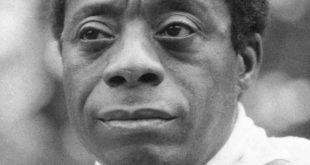Joseph Smith remains one of the most talked-about figures in American religious history. Was he a genuine prophet, a brilliant con man, or something in between? It’s a question that still sparks intense debate. Let’s take a look at the life of this visionary, translator, and founder of the Church of Jesus Christ of Latter-day Saints, separating fact from fiction as best we can. It’s a wild story, buckle up!
Early Life and Influences
The Smith Family in Vermont and New York
Born in Sharon, Vermont, in 1805, Joseph Smith’s early life was marked by hardship and mobility. The Smith family, headed by Joseph Smith Sr. and Lucy Mack Smith, moved frequently throughout New England and eventually settled in upstate New York. Farming wasn’t exactly a goldmine, and the family struggled financially, like so many others at the time. You can imagine what it was like; hard work and little reward. This backdrop of economic uncertainty and the strong family bond undoubtedly shaped young Joseph.
Early Religious Experiences and Seekership
The “Burned-over District” of New York, where the Smiths resided, was a hotbed of religious revivalism. Different denominations competed for converts, creating an atmosphere of intense spiritual searching. The young Joseph, confused by the conflicting claims, began his own quest for religious truth. Did he genuinely seek answers, or was something else at play? Maybe a bit of both, who knows? It’s easy to see how such a chaotic religious landscape could lead a young man to seek a more direct, personal connection with the divine.
The First Vision and the Book of Mormon
The Claimed Appearance of God and Jesus
According to Smith’s account, in 1820, while praying in a grove of trees, he experienced a remarkable vision. He claimed that God the Father and Jesus Christ appeared to him, instructing him not to join any existing church because they were all wrong and corrupt. Talk about a mic drop moment! Can you imagine the impact this would have on a young man’s developing faith? It’s either the most profound spiritual experience imaginable or… well, something else entirely.
Translation of the Golden Plates
Years later, Smith said that an angel named Moroni appeared to him and told him about a book written on golden plates, buried in a nearby hill. These plates, according to Smith, contained the history of ancient inhabitants of the Americas, along with the fullness of the gospel. With the help of divine instruments (the Urim and Thummim), Smith translated these plates into what became the Book of Mormon. Now, I’m no linguist, but translating ancient golden plates? That’s a pretty bold claim. Of course, no one else ever saw these plates, which adds another layer of mystery (or skepticism, depending on your point of view).
Key Doctrines and Themes of the Book of Mormon
The Book of Mormon tells the story of a group of Israelites who migrated to the Americas centuries before Christ. It recounts their history, prophecies, and interactions with Jesus Christ after his resurrection. Central themes include the importance of faith in Jesus Christ, repentance, baptism, and the gathering of Israel. You might find some common ground with other Christian beliefs, but also some pretty significant departures. It introduced a new narrative about the Americas and their role in God’s plan. Did it resonate with people? You bet it did.
The Founding of the Church of Jesus Christ of Latter-day Saints
The Initial Organization and Leadership
On April 6, 1830, Smith and a small group of followers officially organized the Church of Christ (later renamed the Church of Jesus Christ of Latter-day Saints) in Fayette, New York. Smith positioned himself as the Prophet and President of the Church, claiming divine authority to lead and receive revelations. Early converts were drawn to his charisma and the promise of a restored gospel. Think about starting a church from scratch; that’s a pretty ambitious undertaking.
Growth and Expansion in Ohio and Missouri
The church experienced rapid growth in its early years, attracting converts from various religious backgrounds. Smith led his followers to Ohio and then Missouri, establishing communities and temples. Kirtland, Ohio, became an early center of Mormonism, but financial difficulties and internal dissent plagued the community. Moving a large group of people across the country? Sounds like a logistical nightmare. Still, their numbers swelled, and the church started to flex its muscles.
Conflicts and Persecution in Missouri
The growing Mormon population in Missouri aroused suspicion and resentment among non-Mormon settlers. Differences in religious beliefs, economic practices, and political views led to escalating tensions and, eventually, violent clashes. In 1838, the governor of Missouri issued an “Extermination Order,” forcing the Mormons to leave the state. Can you imagine being driven from your home because of your religious beliefs? It’s a dark chapter in American history, and a real testament to the intolerance of the time.
Navoo and the Nauvoo Legion
Building a City and a Temple
After being expelled from Missouri, the Mormons found refuge in Illinois, where they established the city of Nauvoo. Under Smith’s leadership, Nauvoo flourished, becoming one of the largest cities in Illinois. A magnificent temple was built, serving as the center of religious and community life. It must have been quite a sight, a testament to their resilience and determination. Talk about a phoenix rising from the ashes!
The Introduction of Plural Marriage
During this period, Smith secretly introduced the practice of plural marriage (polygamy) to a select group of followers. This controversial doctrine, based on Smith’s interpretation of the Old Testament and claimed divine revelation, would later become a major source of contention. Let’s be honest, polygamy is a tough sell, even today. It’s easy to see how this secret practice would create divisions and fuel opposition.
Growing Tensions and Conflict
Despite its initial success, Nauvoo was plagued by internal dissent and external opposition. Smith’s political ambitions and the practice of plural marriage created enemies both within and outside the Mormon community. Accusations of corruption, abuse of power, and religious fanaticism swirled around Smith and Nauvoo. I guess it was only a matter of time before the whole thing came crashing down.
The Martyrdom of Joseph and Hyrum Smith
The Events Leading to Carthage Jail
In 1844, Smith ordered the destruction of the printing press of the Nauvoo Expositor, a newspaper that had published articles critical of Smith and his teachings, including his practice of polygamy. This act ignited widespread outrage, leading to Smith’s arrest and imprisonment in Carthage Jail, along with his brother Hyrum. Censorship always backfires, doesn’t it? Trying to suppress criticism only made things worse.
The Aftermath and Succession Crisis
On June 27, 1844, a mob stormed Carthage Jail and brutally murdered Joseph and Hyrum Smith. Their deaths sent shockwaves through the Mormon community and triggered a succession crisis. Who would lead the church now? The assassination threw everything into chaos. Several leaders vied for control, eventually leading to a split within the church. Brigham Young emerged as the leader of the majority faction, leading them on a long and arduous journey west to the Salt Lake Valley.
Joseph Smith’s Legacy and Influence
The Enduring Appeal of Mormonism
Despite the controversies and hardships, the Church of Jesus Christ of Latter-day Saints has grown into a global religion with millions of members worldwide. Mormonism’s appeal lies in its emphasis on family values, community, personal revelation, and a unique understanding of Christian theology. It offers a sense of belonging and purpose that resonates with many. Who knew that a small group of followers in upstate New York would blossom into a global phenomenon?
Controversies and Criticisms
Smith’s life and teachings continue to be the subject of intense scrutiny and debate. Critics question the authenticity of his revelations, the historicity of the Book of Mormon, and his character. Accusations of fraud, deception, and sexual impropriety have dogged Smith’s legacy. There are always two sides to every story, aren’t there? It’s up to each individual to weigh the evidence and form their own conclusions.
Joseph Smith’s Place in American Religious History
Regardless of one’s personal beliefs, there’s no denying that Joseph Smith is a pivotal figure in American religious history. He founded a major religious movement that has shaped the cultural and religious landscape of the United States and beyond. Love him or hate him, his influence is undeniable. He’s a controversial figure, yes, but also one of the most important religious innovators in American history.
So, there you have it – a brief look at the life and legacy of Joseph Smith. What do you make of it all? It’s a story filled with faith, controversy, and a whole lot of unanswered questions. Whether you see him as a prophet, a charlatan, or something in between, there’s no denying the profound impact he had on the world. Now it’s your turn to dive deeper, explore the evidence, and decide for yourself!
 Cloudabouts
Cloudabouts




